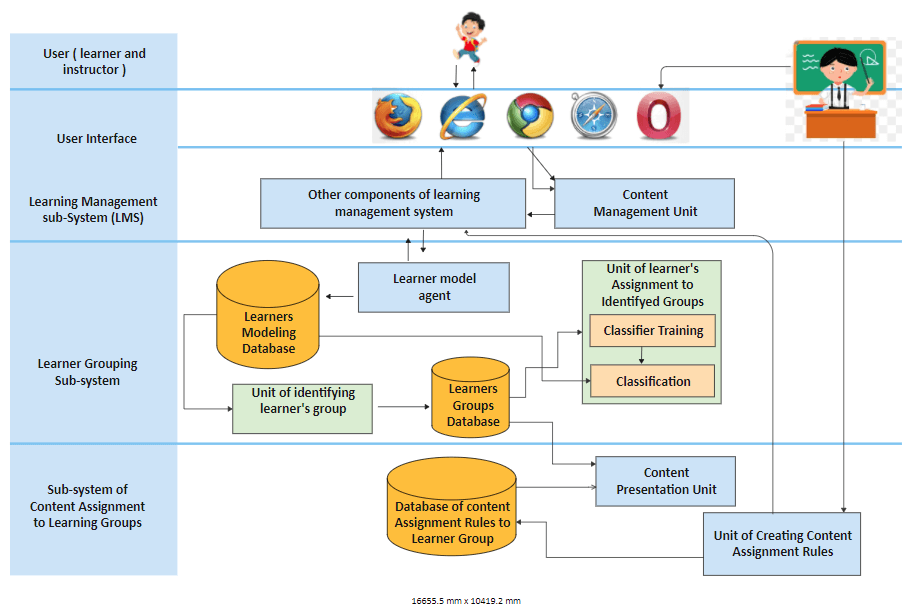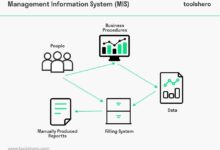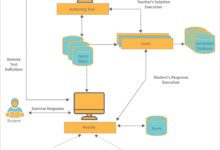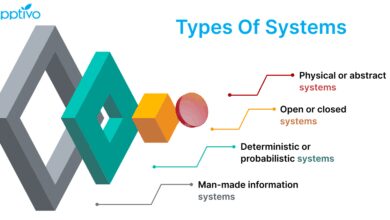System Architecture: 7 Powerful Insights for Modern Design
Ever wondered how massive tech platforms like Google or Netflix stay up and running without crashing? The secret lies in their system architecture — the invisible blueprint that holds everything together. Let’s dive into what makes it so powerful.
What Is System Architecture?

System architecture is the foundational design of a software or hardware system. It defines how different components interact, communicate, and scale. Think of it as the architectural plan of a skyscraper — without it, the building would collapse under its own weight.
Core Definition and Purpose
At its heart, system architecture is about structure and strategy. It outlines the high-level components of a system, their relationships, and the principles guiding their design and evolution. According to the IEEE standard, it’s a conceptual model that defines the structure, behavior, and views of a system.
- Defines system boundaries and interfaces
- Guides development teams toward consistency
- Enables scalability, reliability, and performance
Key Stakeholders in System Architecture
Designing system architecture isn’t a one-person job. It involves collaboration among various stakeholders:
- Software Architects: Lead the design and enforce standards.
- Developers: Implement the architecture in code.
- Product Managers: Ensure alignment with business goals.
- DevOps Engineers: Focus on deployment, monitoring, and infrastructure.
“Good system architecture doesn’t just support functionality — it anticipates future needs.” — Martin Fowler, Chief Scientist at ThoughtWorks
Types of System Architecture
Not all architectures are created equal. Depending on the application’s needs, different architectural styles are used to optimize performance, scalability, and maintainability.
Monolithic Architecture
In a monolithic system architecture, all components — user interface, business logic, and data access — are tightly coupled within a single codebase. This was the norm in early web applications.
- Easy to develop and deploy initially
- Hard to scale as the system grows
- Failure in one module can bring down the entire system
For example, early versions of Amazon used a monolithic design before transitioning to microservices to handle massive traffic.
Microservices Architecture
Microservices break down an application into small, independent services that communicate via APIs. Each service handles a specific business function.
- Highly scalable and resilient
- Allows teams to develop, deploy, and scale services independently
- Increases complexity in monitoring and inter-service communication
Netflix is a prime example of a company that leverages microservices in its system architecture to deliver content globally with minimal downtime.
Event-Driven Architecture
This style revolves around the production, detection, and reaction to events. Components communicate asynchronously through events, making the system highly responsive.
- Ideal for real-time applications like chat systems or stock trading platforms
- Decouples producers and consumers of data
- Can introduce challenges in debugging and event ordering
Companies like Uber use event-driven system architecture to process ride requests, driver availability, and payments in real time.
Key Components of System Architecture
A robust system architecture isn’t just about choosing a style — it’s about integrating the right components to ensure performance, security, and scalability.
Frontend and Backend Layers
The frontend is what users interact with — web pages, mobile apps, or desktop interfaces. The backend handles data processing, business logic, and integration with databases.
- Frontend frameworks like React or Angular enhance user experience
- Backend technologies like Node.js, Django, or Spring Boot power server-side operations
- APIs (REST or GraphQL) bridge the gap between frontend and backend
Data Storage and Management
Choosing the right data storage solution is critical in system architecture. Options include relational databases (e.g., PostgreSQL), NoSQL databases (e.g., MongoDB), and data warehouses (e.g., Snowflake).
- Relational databases ensure ACID compliance for financial systems
- NoSQL databases offer flexibility and horizontal scaling for big data
- Cache layers like Redis reduce database load and improve response times
Networking and Communication Protocols
How components talk to each other defines system efficiency. HTTP/HTTPS, gRPC, WebSockets, and message queues (e.g., Kafka, RabbitMQ) are common communication tools.
- gRPC is used for high-performance internal services
- WebSockets enable real-time updates in applications like live dashboards
- Message queues decouple services and handle asynchronous processing
Design Principles for Effective System Architecture
Great system architecture follows time-tested principles that ensure long-term success and adaptability.
Scalability and Elasticity
Scalability refers to a system’s ability to handle increased load by adding resources. Elasticity takes it further — automatically scaling up or down based on demand.
- Horizontal scaling adds more instances of a service
- Vertical scaling increases the power of existing machines
- Cloud platforms like AWS and Azure offer auto-scaling groups for dynamic workloads
For instance, during Black Friday sales, e-commerce platforms like Shopify use elastic system architecture to handle traffic spikes without crashing.
Reliability and Fault Tolerance
A reliable system remains operational even when parts fail. Fault tolerance ensures continuity through redundancy and failover mechanisms.
- Replicating databases across regions prevents data loss
- Load balancers distribute traffic to healthy instances
- Circuit breakers (like Hystrix) prevent cascading failures
Google’s global infrastructure uses fault-tolerant system architecture to maintain 99.9% uptime across its services.
Security by Design
Security shouldn’t be an afterthought. In modern system architecture, it’s embedded from the start.
- Authentication (OAuth, JWT) and authorization (RBAC) control access
- Encryption (TLS, AES) protects data in transit and at rest
- Regular penetration testing and vulnerability scanning are essential
The OWASP Top 10 provides a framework for securing web applications within any system architecture.
System Architecture in Cloud Computing
The rise of cloud computing has revolutionized how system architecture is designed and deployed. Cloud platforms offer scalable, on-demand resources that simplify infrastructure management.
Cloud Deployment Models
There are three main cloud deployment models: public, private, and hybrid.
- Public Cloud (AWS, Azure, GCP): Cost-effective and scalable, ideal for startups and enterprises
- Private Cloud: Offers greater control and security, often used in finance and healthcare
- Hybrid Cloud: Combines both, allowing sensitive data to stay on-premise while leveraging public cloud for scalability
Serverless and Function-as-a-Service (FaaS)
Serverless computing allows developers to run code without managing servers. Functions are triggered by events and scale automatically.
- AWS Lambda, Google Cloud Functions, and Azure Functions are popular FaaS platforms
- Reduces operational overhead and costs
- Best for sporadic workloads like image processing or API gateways
For example, a photo-sharing app might use AWS Lambda to automatically resize images when uploaded to S3.
Infrastructure as Code (IaC)
IaC treats infrastructure setup as code, enabling version control, automation, and consistency.
- Tools like Terraform and AWS CloudFormation define infrastructure in declarative files
- Enables reproducible environments and reduces human error
- Integrates seamlessly with CI/CD pipelines
Companies like Netflix use IaC to manage thousands of cloud resources across multiple regions.
Performance Optimization in System Architecture
Even the best-designed system can fail if it’s slow or unresponsive. Performance optimization is a critical aspect of system architecture.
Caching Strategies
Caching stores frequently accessed data in fast-access storage to reduce latency.
- Browser caching improves page load times
- CDNs (Content Delivery Networks) cache static assets globally
- Application-level caching (Redis, Memcached) reduces database queries
Twitter uses Redis extensively in its system architecture to cache timelines and user data, ensuring quick access during peak usage.
Load Balancing and Traffic Management
Load balancers distribute incoming traffic across multiple servers to prevent overload.
- Round-robin, least connections, and IP hash are common algorithms
- Global Server Load Balancing (GSLB) routes traffic based on geographic location
- Tools like NGINX, HAProxy, and AWS ELB are widely used
Spotify uses load balancing in its system architecture to ensure smooth music streaming across millions of users.
Database Optimization Techniques
Databases often become bottlenecks. Optimizing them is crucial for system performance.
- Indexing speeds up query execution
- Sharding splits large databases into smaller, manageable pieces
- Read replicas offload read queries from the primary database
Facebook uses database sharding in its system architecture to manage petabytes of user data efficiently.
Real-World Examples of System Architecture
Understanding theory is important, but seeing it in action makes it real. Let’s look at how major tech companies design their system architecture.
Amazon’s Evolution from Monolith to Microservices
In the early 2000s, Amazon ran on a monolithic system architecture. As traffic grew, it became slow and hard to scale. The company re-architected its platform into microservices, allowing independent teams to deploy features faster.
- Each service (e.g., product catalog, recommendations, payments) runs independently
- APIs enable seamless communication between services
- This shift laid the foundation for AWS, now a leader in cloud computing
Netflix’s Resilient and Scalable Architecture
Netflix serves over 200 million users worldwide. Its system architecture is built for resilience and scalability.
- Uses microservices with over 700 independent services
- Leverages Chaos Monkey to test fault tolerance by randomly shutting down services
- Employs a CDN and edge caching to deliver content with low latency
Their architecture ensures that even if one service fails, the entire platform remains functional.
Google’s Global-Scale System Architecture
Google processes billions of searches daily. Its system architecture is designed for speed, reliability, and global reach.
- Uses a distributed file system (GFS) and Bigtable for data storage
- Employs load balancing and global DNS to route users to the nearest data center
- Leverages custom hardware and software (e.g., Borg, now Kubernetes) for orchestration
Google’s architecture is a benchmark for large-scale system design.
Future Trends in System Architecture
Technology evolves fast. Staying ahead means anticipating the next wave of innovation in system architecture.
Edge Computing and Decentralized Architectures
Instead of sending all data to centralized cloud servers, edge computing processes data closer to the source — like IoT devices or 5G networks.
- Reduces latency for real-time applications (e.g., autonomous vehicles)
- Improves bandwidth efficiency
- Enhances privacy by keeping sensitive data local
Companies like Tesla use edge computing in their system architecture to process vehicle sensor data in real time.
AI-Driven Architecture Design
Artificial intelligence is beginning to assist in designing and optimizing system architecture.
- AI can predict traffic patterns and auto-scale resources
- Machine learning models detect anomalies and prevent outages
- Tools like AWS DevOps Guru use AI to recommend architecture improvements
In the near future, AI might generate optimal system architecture blueprints based on business requirements.
Quantum Computing and Its Potential Impact
While still in early stages, quantum computing could revolutionize system architecture by solving problems intractable for classical computers.
- Could break current encryption methods, requiring new security models
- May enable ultra-fast simulations and optimizations
- Companies like IBM and Google are investing heavily in quantum-ready architectures
Though not mainstream yet, forward-thinking organizations are already exploring quantum-safe system architecture.
What is system architecture?
System architecture is the high-level design of a software or hardware system, defining its components, relationships, and principles. It serves as a blueprint for building scalable, reliable, and maintainable systems.
Why is system architecture important?
It ensures that a system can handle growth, remain secure, and perform efficiently. Poor architecture leads to technical debt, outages, and high maintenance costs.
What are the most common types of system architecture?
The most common types include monolithic, microservices, event-driven, and serverless architectures. Each has its own trade-offs in terms of complexity, scalability, and maintainability.
How does cloud computing affect system architecture?
Cloud computing enables flexible, scalable, and cost-effective system architecture. It allows for rapid deployment, auto-scaling, and global distribution of services.
What skills are needed to design system architecture?
Key skills include understanding distributed systems, networking, databases, security, and cloud platforms. Experience with design patterns, performance optimization, and DevOps practices is also essential.
System architecture is the backbone of every successful technology product. From choosing the right design pattern to optimizing performance and preparing for the future, it requires a blend of technical depth and strategic thinking. Whether you’re building a startup app or managing a global platform, investing in solid system architecture pays off in reliability, scalability, and long-term success. As technology evolves, so too must our approach — embracing cloud, AI, and edge computing to build systems that are not just functional, but extraordinary.
Further Reading:









